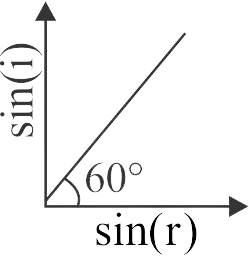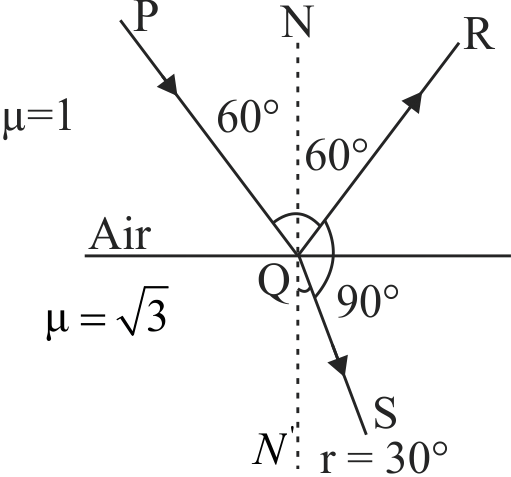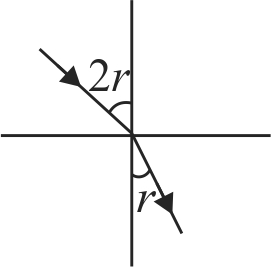364994
A ray of light is incident on a medium with angle of incidence \(i\) and refracted into a second medium with angle of refraction \(r\). The graph of sin(\(i\)) vs sin(\(r\)) is as shown in figure. Then, the velocity of light in the first medium is \(n\) times the velocity of light in the second medium. What should be the value of \(n\)?
364994
A ray of light is incident on a medium with angle of incidence \(i\) and refracted into a second medium with angle of refraction \(r\). The graph of sin(\(i\)) vs sin(\(r\)) is as shown in figure. Then, the velocity of light in the first medium is \(n\) times the velocity of light in the second medium. What should be the value of \(n\)?
364994
A ray of light is incident on a medium with angle of incidence \(i\) and refracted into a second medium with angle of refraction \(r\). The graph of sin(\(i\)) vs sin(\(r\)) is as shown in figure. Then, the velocity of light in the first medium is \(n\) times the velocity of light in the second medium. What should be the value of \(n\)?
364994
A ray of light is incident on a medium with angle of incidence \(i\) and refracted into a second medium with angle of refraction \(r\). The graph of sin(\(i\)) vs sin(\(r\)) is as shown in figure. Then, the velocity of light in the first medium is \(n\) times the velocity of light in the second medium. What should be the value of \(n\)?

